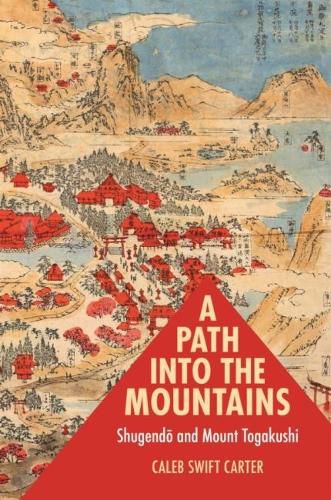Readings Newsletter
Become a Readings Member to make your shopping experience even easier.
Sign in or sign up for free!
You’re not far away from qualifying for FREE standard shipping within Australia
You’ve qualified for FREE standard shipping within Australia
The cart is loading…






Japan’s tradition of Shugendo has long been an object of fascination and intrigue among scholars and the general public, yet its historical development remains an enigma. A Path into the Mountains offers a provocative reexamination of the complex social, economic, and spiritual terrain from which this mountain religious system arose.
Caleb Carter traces Shugendo through the mountains of Togakushi in Nagano prefecture, while situating it within the broader religious landscape of medieval and early modern Japan. His is the first major study to approach Shugendo as a self-conscious religious system–something that was historically emergent but conceptually distinct from the prevailing Buddhist orders of medieval Japan. Beyond the case of Shugendo, this book rethinks a range of issues in the history of Japanese religions, including exclusionary policies toward women, the formation of Shinto, and religion at the social and geographical margins of the Japanese archipelago.
A Path into the Mountains takes a novel approach in the study of religions by tracking three recurrent and intersecting elements–institution, ritual, and narrative–in the historical formation of religion. Transmitted to Togakushi in the sixteenth century, Shugendo underwent a gradual process of adaptation to a mountain setting already steeped in Buddhist doctrines, rigorous ascetic practices, and devotion to a nine-headed dragon. Examination of origin accounts, temple records, gazetteers, and iconography from Togakushi demonstrates how its practitioners implemented creative storytelling tactics, new rituals and festivals, and institutional measures to merge Shugendo with their mountain’s culture while simultaneously establishing a foundation of social legitimacy and economic security to buttress their livelihoods.
Indicative of early modern trends, the case of Mount Togakushi reveals how Shugendo moved from a patchwork of regional communities into a translocal system of national scope and reputation, eventually becoming Japan’s signature mountain religion. More broadly, it outlines the historical methods by which religious actors mobilized story, ritual, and institution to shape their own sense of religious practice and identity.
A Path into the Mountains will find a ready audience among students and scholars of Japanese religions, but also bears relevance for those interested in Buddhism, religious cultural history, and mountain communities.
$9.00 standard shipping within Australia
FREE standard shipping within Australia for orders over $100.00
Express & International shipping calculated at checkout
Stock availability can be subject to change without notice. We recommend calling the shop or contacting our online team to check availability of low stock items. Please see our Shopping Online page for more details.
Japan’s tradition of Shugendo has long been an object of fascination and intrigue among scholars and the general public, yet its historical development remains an enigma. A Path into the Mountains offers a provocative reexamination of the complex social, economic, and spiritual terrain from which this mountain religious system arose.
Caleb Carter traces Shugendo through the mountains of Togakushi in Nagano prefecture, while situating it within the broader religious landscape of medieval and early modern Japan. His is the first major study to approach Shugendo as a self-conscious religious system–something that was historically emergent but conceptually distinct from the prevailing Buddhist orders of medieval Japan. Beyond the case of Shugendo, this book rethinks a range of issues in the history of Japanese religions, including exclusionary policies toward women, the formation of Shinto, and religion at the social and geographical margins of the Japanese archipelago.
A Path into the Mountains takes a novel approach in the study of religions by tracking three recurrent and intersecting elements–institution, ritual, and narrative–in the historical formation of religion. Transmitted to Togakushi in the sixteenth century, Shugendo underwent a gradual process of adaptation to a mountain setting already steeped in Buddhist doctrines, rigorous ascetic practices, and devotion to a nine-headed dragon. Examination of origin accounts, temple records, gazetteers, and iconography from Togakushi demonstrates how its practitioners implemented creative storytelling tactics, new rituals and festivals, and institutional measures to merge Shugendo with their mountain’s culture while simultaneously establishing a foundation of social legitimacy and economic security to buttress their livelihoods.
Indicative of early modern trends, the case of Mount Togakushi reveals how Shugendo moved from a patchwork of regional communities into a translocal system of national scope and reputation, eventually becoming Japan’s signature mountain religion. More broadly, it outlines the historical methods by which religious actors mobilized story, ritual, and institution to shape their own sense of religious practice and identity.
A Path into the Mountains will find a ready audience among students and scholars of Japanese religions, but also bears relevance for those interested in Buddhism, religious cultural history, and mountain communities.